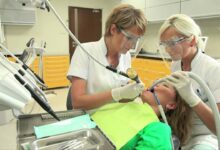
How to Qualify for a Military Medical Scholarship and Start Your Career in Healthcare
How to Qualify for a Military Medical Scholarship and Start Your Career in Healthcare
Becoming a doctor is a noble and rewarding career, but it often comes with a hefty price tag. With the average cost of medical school exceeding $40,000 per year in tuition alone, plus additional costs for living, books, and supplies, it’s no surprise that many medical students graduate with staggering amounts of debt. For some aspiring doctors, this financial burden can be overwhelming.
However, there is an incredible opportunity that many don’t know about: the full-ride military medical school scholarships. These scholarships are a lifeline for those who want to become doctors while serving their country. They cover not only tuition but also living expenses, health insurance, and other associated costs, offering a significant financial advantage. In exchange, you are required to serve as a physician in the U.S. military after graduation.
This comprehensive guide will walk you through the step-by-step process of how to secure one of these full-ride military medical school scholarships, including the Health Professions Scholarship Program (HPSP), eligibility criteria, the application process, and tips for crafting a winning application.
Introduction

In today’s economy, many students face the challenge of finding ways to finance their medical education without going into extreme debt. This is where military medical school scholarships come in. These scholarships not only provide full tuition coverage but also offer generous stipends for living expenses, health benefits, and other perks that can make a medical career both financially and personally fulfilling.
One of the most popular military medical school scholarships is the Health Professions Scholarship Program (HPSP), which is offered by the U.S. military. Through this program, you can attend medical school without the burden of student loans. Instead, in return for receiving financial support, you agree to serve as a commissioned officer in one of the U.S. military branches for a set number of years. This win-win situation allows you to become a doctor and make a significant contribution to your country.
In this post, we’ll guide you through everything you need to know to successfully apply for a full-ride military medical school scholarship. Whether you’re interested in the Army, Navy, or Air Force, we’ll provide the insights, tips, and resources that will help you secure your future.
Why a Military Medical Scholarship
The High Cost of Medical School Education
Let’s face it: medical school is expensive. Tuition alone at U.S. medical schools can range anywhere from $30,000 to $60,000 per year. When you factor in additional expenses such as books, supplies, fees, and living costs, the total cost of a medical education can easily exceed $250,000 for a four-year program. For many students, taking out large loans is the only viable option.
Medical school debt is one of the most significant burdens that many students face after graduation. In fact, the average medical student loan debt in the U.S. is around $200,000, according to the Association of American Medical Colleges (AAMC). This debt can impact your ability to pursue certain specialties, buy a house, and plan for your future.
How a Full Ride Scholarship Can Help
A full-ride military medical school scholarship is a powerful solution to the high cost of medical education. These scholarships cover 100% of tuition, fees, and even living expenses, which can significantly reduce the financial stress of attending medical school. In addition, the scholarships provide you with the opportunity to earn a salary while you study, allowing you to avoid part-time jobs or loans that could add to your financial burden.
By securing a full-ride military medical scholarship, you can focus on what matters most: your education and becoming the best physician possible. You won’t need to worry about how to pay for textbooks, housing, or groceries, and you can dedicate your time to excelling in medical school and preparing for your future career.
Additional Benefits Beyond Tuition
Besides covering tuition, military medical scholarships also offer:
- Monthly stipends for living expenses (typically around $2,500 per month).
- Health insurance for you and your dependents.
- Book allowances and uniform allowances.
- Post-graduation job security within the U.S. military as a commissioned officer.
The HPSP also provides you with a guaranteed career path, job security, and a chance to specialize in areas of medicine that are of interest to you. Whether you serve in a hospital, clinic, or in the field, these scholarships open doors to a wide range of exciting career opportunities.
What is the Military Health Professions Scholarship Program (HPSP)? –
Military Medical Scholarship
Overview of the HPSP
The Health Professions Scholarship Program (HPSP) is one of the most well-known and respected military medical school scholarship programs in the U.S. Through this program, students who are accepted into accredited medical schools are awarded full tuition, fees, and a monthly stipend in exchange for serving in the military for a set number of years after graduation.
The U.S. Army, U.S. Navy, and U.S. Air Force all offer HPSP scholarships. While the benefits and commitments vary slightly between the branches, the basic structure of the scholarship is the same across all three.
Benefits of the HPSP Program
- Full tuition coverage for medical school.
- Monthly stipends of approximately $2,500 for living expenses.
- Health insurance coverage for you and your dependents.
- Books and supplies allowances.
- Guaranteed job as a commissioned officer upon graduation, with opportunities for specialization and advancement.
The HPSP scholarship allows you to study at some of the best medical schools in the U.S. without worrying about finances. It provides both financial relief and a clear career path in the military’s medical corps.
Who is Eligible for HPSP?
Eligibility for the HPSP typically includes the following requirements:
- U.S. citizenship or permanent residency.
- Enrollment or acceptance into an accredited medical school in the U.S.
- Age limits (typically between 18 and 35 years old).
- A strong academic record, including high grades in your pre-med coursework.
- A willingness to commit to a service obligation in the military after graduation.
Eligibility requirements may vary slightly depending on the branch of the military, so it’s essential to research the specific requirements for each branch.
For more information about HPSP and eligibility, check out the U.S. Army HPSP page, U.S. Navy HPSP page, and U.S. Air Force HPSP page.
Eligibility Criteria for Military Medical Scholarship
General Eligibility Requirements
To apply for a military medical scholarship, you must meet certain eligibility criteria. These criteria generally include:
- U.S. citizenship or permanent residency.
- Acceptance or enrollment in an accredited medical school.
- Strong academic performance, usually a minimum GPA of 3.5 or higher.
- Age requirements (usually between 18 and 35 years old).
- Commitment to serve in the military after completing medical school.
Age Limitations
While the age requirements vary slightly depending on the military branch, most programs require you to be under the age of 35 when applying. However, if you have prior military experience or are applying for a combined MD/PhD program, there may be some flexibility in the age limit.
Service Obligation
In exchange for receiving a full-ride military medical school scholarship, you are required to serve as a commissioned officer in one of the U.S. military branches. The typical commitment is one year of active duty for each year of scholarship support. After you complete your service obligation, you can continue your career as a physician, specializing in areas such as pediatrics, surgery, psychiatry, or internal medicine.
How to Apply for Military Medical Scholarship
Step 1 – Research Available Scholarships
The first step in applying for a military medical school scholarship is to research the various programs available. Each branch of the military offers its own scholarships, and they may have different eligibility requirements, benefits, and application processes.
Start by researching the Army, Navy, and Air Force HPSP programs, and determine which one is the best fit for your career goals.
Step 2 – Prepare the Required Documentation
You will need to submit several documents as part of your application, including:
- Academic transcripts from all institutions attended.
- Letters of recommendation from professors, mentors, or supervisors.
- Personal statement or essay explaining why you want to pursue a medical career and serve in the military.
- Proof of U.S. citizenship or permanent residency.
- Medical school acceptance letter or evidence of enrollment.
Ensure that all documents are complete, accurate, and submitted by the application deadline.
Step 3 – Meet the Academic Standards
To be competitive, you’ll need a strong academic record. This includes high grades in your pre-med coursework and a competitive MCAT score. While military medical scholarships are highly competitive, maintaining a strong academic performance will significantly increase your chances of success.
Step 4 – Write a Strong Personal Statement
Your personal statement is one of the most important components of your application. It should demonstrate your passion for medicine, your desire to serve in the military, and how you will contribute to the healthcare field.
Focus on your motivation to serve in the military and why being a physician is your chosen career path. Make sure to provide personal examples and anecdotes that showcase your leadership and commitment to healthcare.
Step 5 – Complete the Application Process
After gathering all necessary documentation and writing your personal statement, submit your application to the relevant military branch. Be sure to follow the instructions carefully, and double-check that you have included all required materials. Also, make sure to submit your application well before the deadline.
Crafting a Winning Personal Statement
Why Your Personal Statement is Key
Your personal statement is often the deciding factor between two equally qualified candidates. This is your opportunity to showcase your personal motivation, dedication, and future goals. You want to paint a picture of why you’re passionate about both medicine and military service.
Tips for Writing a Compelling Statement
- Be authentic: Share your personal journey, motivations, and experiences.
- Focus on service: Clearly explain why you want to serve in the military.
- Structure your statement: Organize your essay into an introduction, body paragraphs with specific examples, and a conclusion that ties everything together.
Common Mistakes to Avoid
- Don’t write a generic statement—your essay should reflect your unique experiences and motivations.
- Avoid focusing too much on why medical school is hard or expensive. Instead, focus on why you’re driven to become a doctor and serve your country.
Letters of Recommendation
How to Choose the Right Recommenders
Your letters of recommendation should come from people who know you well and can speak to your academic abilities, work ethic, and commitment to service. These may include professors, mentors, or supervisors from healthcare or military-related positions.
What to Include in a Strong Recommendation
Strong letters should highlight specific examples of your leadership, academic achievements, and personal qualities that make you a good fit for a military medical career. Provide your recommenders with a copy of your personal statement and résumé to help them write a more personalized and impactful letter.
How to Ask for a Letter of Recommendation
When asking for a letter, give your recommenders ample time to write it—at least 3–4 weeks before the deadline. Be polite, and provide them with all necessary details to help them craft a thoughtful recommendation.
Preparing for the Interview
Interview Process for Military Medical Scholarships
If you are selected for an interview, congratulations! This means you’re one step closer to receiving your full-ride military medical school scholarship. The interview process typically involves questions about your academic achievements, personal motivations, and commitment to military service.
How to Prepare for Your Interview
- Research: Understand the military branch you are applying to and its specific needs.
- Practice: Answer mock interview questions with a friend or mentor.
- Dress professionally: Even if the interview is virtual, present yourself well.
Common Questions Asked During the Interview
- Why do you want to serve in the military?
- What are your long-term career goals in medicine?
- How will you contribute to military healthcare?
Service Obligation: What You Need to Know
The Length of Service
Typically, you will need to serve one year for each year you receive scholarship support. If you received four years of scholarship support, you will owe four years of service as a commissioned officer in the military.
What Does Active Duty Involve?
As a medical officer in the military, you will work in military hospitals, clinics, and field operations, providing care to military personnel and their families. Service can take place at home or abroad, including in areas with military operations.
Balancing Residency and Military Service
Many military medical professionals serve during their residency while fulfilling their service obligation. This often requires coordination between military supervisors and residency directors. You may also be deployed during residency or placed in military healthcare settings during certain rotations.
Maximizing Your Chances of Securing the Scholarship
Demonstrating a Strong Commitment to Service
The military highly values service-oriented individuals. Be sure to showcase your dedication to public health and humanitarian work, whether through volunteer efforts, community outreach, or prior military service.
Excelling in Your Academics
A strong academic record is critical. Your MCAT score, grades in pre-med courses, and overall academic performance will all be considered. Work hard to maintain a competitive GPA, and seek academic support if needed.
Gaining Relevant Experience
Gaining experience in healthcare or military settings will make you a more attractive candidate. Volunteer at hospitals, work in research labs, or engage in community service projects.
Networking with Veterans and Faculty
Network with veterans and faculty members who are familiar with military medical programs. They can provide valuable guidance, tips, and insights that can help you during the application process.
Benefits of the Military Medical School Scholarship
Full Tuition Coverage
One of the most significant benefits is the full tuition coverage, which saves you hundreds of thousands of dollars in student loan debt.
Monthly Stipends for Living Expenses
In addition to tuition coverage, the scholarship provides a monthly stipend for living expenses. This money can be used for rent, food, and other essential expenses, allowing you to focus entirely on your studies.
Health Insurance and Other Perks
The scholarship also includes health insurance and other benefits, making your time in medical school much more manageable financially.
Post-Graduation: What Happens After You Complete Your Military Medical School Scholarship
Where Will You Serve?
Upon graduation, you will serve as a commissioned officer in the U.S. military. This could involve working in military hospitals, clinics, or other healthcare settings.
Opportunities for Specialization and Advancement
After serving your minimum obligation, you will have opportunities to specialize in various medical fields, including surgery, pediatrics, psychiatry, or internal medicine. There are also opportunities for career advancement within the military.
Conclusion
Securing a full-ride military medical school scholarship is an incredible opportunity that can transform your medical career. By following the steps outlined in this guide, you can increase your chances of receiving a scholarship and take one step closer to becoming a physician while serving your country. With full tuition coverage, living stipends, and health benefits, military medical school scholarships offer an excellent pathway for aspiring doctors to receive an education without the burden of debt.
Also Read: 10 Irresistible Medical School Scholarships with Life-Changing Stipend
FAQs
- What is the difference between a full-ride military medical scholarship and other types of medical school scholarships?
A full-ride military medical scholarship covers 100% of tuition, provides a monthly stipend, and includes health insurance, in exchange for a service commitment in the military. - Can international students apply for military medical school scholarships?
No, only U.S. citizens or permanent residents are eligible to apply for military medical scholarships. - How long does the HPSP scholarship last?
The HPSP scholarship lasts four years, and recipients are required to serve one year in the military for each year of scholarship received. - What happens if you do not fulfill your service commitment after receiving the scholarship?
If you fail to fulfill your service commitment, you will be required to repay the full scholarship amount, including interest. - What are the key benefits of the military health professions scholarship program (HPSP)?
The HPSP offers full tuition coverage, living stipends, health insurance, and the opportunity to serve as a physician in the U.S. military.
Call to Action (CTA):
Ready to secure your future as a doctor without the burden of medical school debt? Apply for a full-ride military medical school scholarship today and join the ranks of those who serve their country while pursuing their dream career!












2 Comments